Entering the world of indoor gardening can seem overwhelming to beginners. However, growing plants indoors not only beautifies our spaces, but can also improve our well-being and create a healthier and more relaxing environment.
For those who are learning about gardening, it is essential to understand which plants are suitable for indoors and how to care for them.
Having indoor plants is a wonderful way to connect with nature, improve the quality of indoor life, and add a touch of greenery and vitality to your everyday spaces.
So I invite you to continue reading this article and discover which are the 10 best indoor plants for beginners:
1. Chamaedorea seifrizii
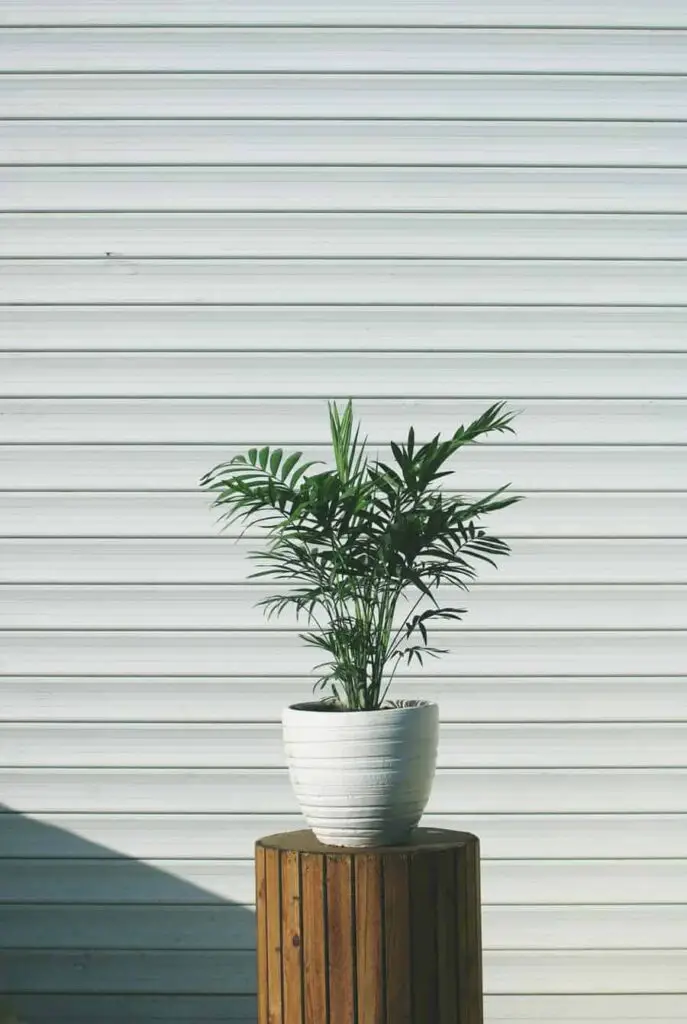
Chamaedorea seifrizii, also known as bamboo palm, is a popular houseplant due to its elegant appearance and its ability to purify the air.
It is characterized by its thin, arching stems, its bright green leaves and its ability to grow in low light conditions.
It is an ideal choice for interior spaces with little natural light and requires relatively low maintenance making it perfect for beginners.
2. Pilea peperomioides

Pilea peperomioides, also known as the money plant or Chinese money plant, is a houseplant with round, shiny leaves that look like coins. It is characterized by its compact growth and easy propagation through suckers.
Under suitable conditions, Pilea peperomioides can produce small white flowers in the form of clusters in the spring or summer.
It is a hardy, low-maintenance plant that adds a touch of freshness and joy to any interior space.
3. Dracaena reflexa
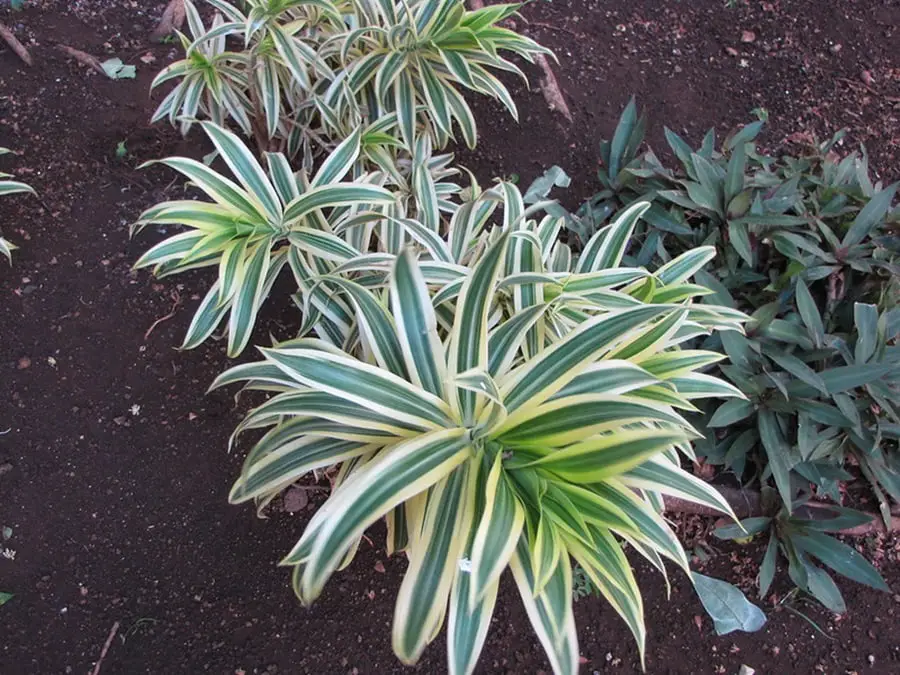
Dracaena reflexa is a popular houseplant known for its long, thin, arching leaves that grow in dense clusters. Its leaves are bright green with red or yellow edges in some varieties.
The plant usually has a thin, erect stem that can branch as it grows. As Dracaena reflexa grows, its stems may arch or droop slightly, especially in mature, larger varieties.
This plant is hardy and tolerant of low light conditions, making it an option for indoor spaces with indirect light. Additionally, Dracaena reflexa is easy to care for and can add a touch of tropical elegance to any home or office.
4. Scindapsus pictus
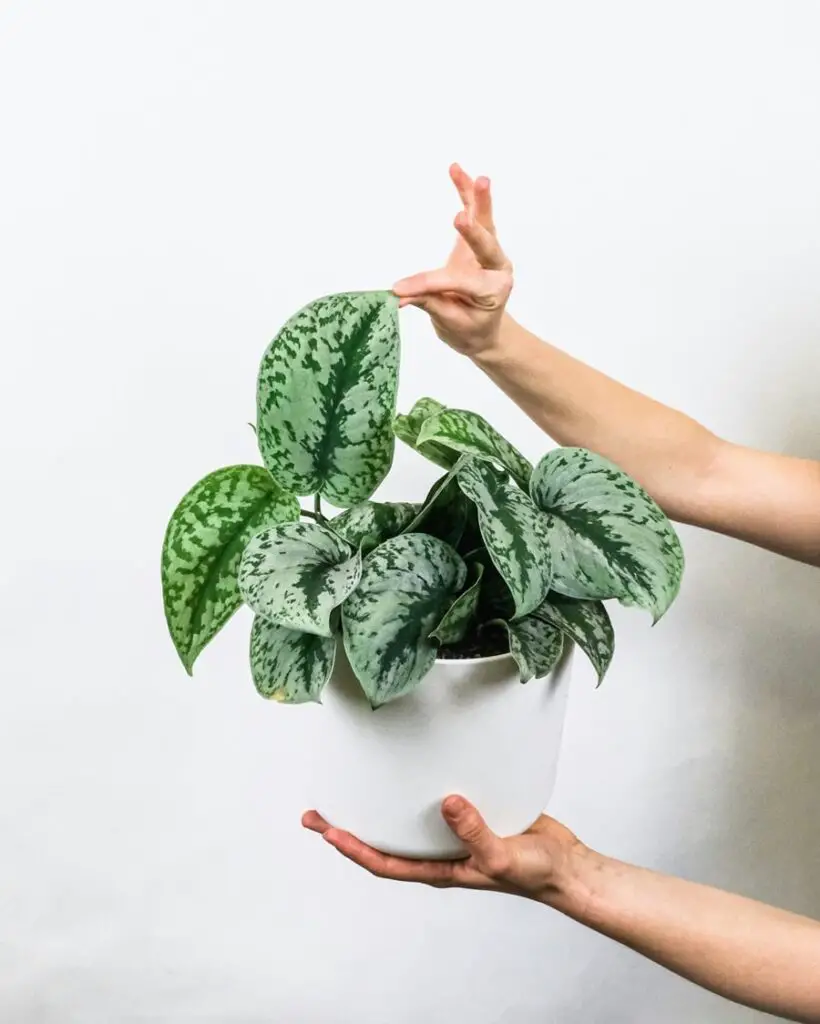
Scindapsus pictus (pothos or satin pothos), is an indoor plant with very showy green leaves speckled with silver or white spots.
This plant has attractive, satin-looking foliage, which adds a different touch to any interior space.
This plant is easy to care for and is ideal for beginners as it tolerates a variety of light conditions and requires little maintenance. Scindapsus pictus is a popular choice for hanging in pots or placing on shelves, where its showy leaves can show off best.
5. Pachira aquatica
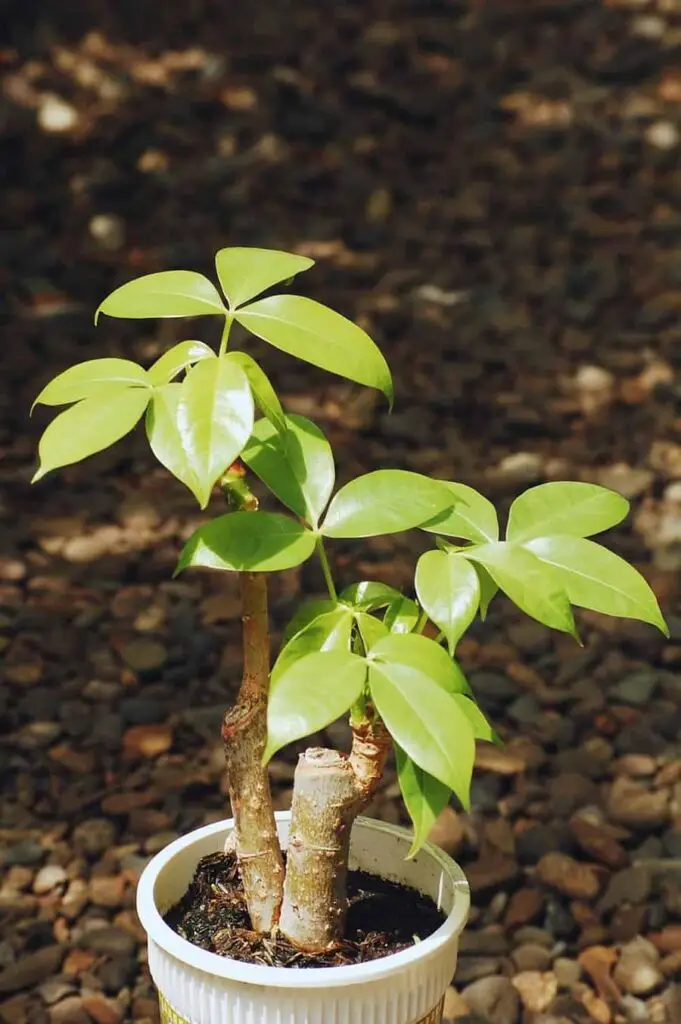
Pachira aquatica, also known as the lucky tree, is a popular and attractive houseplant characterized by its braided trunk and bright green foliage.
It is considered a symbol of good luck and prosperity in some cultures. Pachira aquatica is relatively easy to care for and can adapt to a variety of light conditions, although it prefers bright indirect light.
It requires regular watering and well-drained soil to thrive. It is a great option for those who want to add a touch of nature and good fortune to their home or office.
6. Orquídea (Orchidaceae)

Orchids are fascinating plants known for their unmatched beauty and diversity.
They are characterized by their striking flowers that come in a wide variety of colors (white, pink, purple, yellow, etc.), shapes and sizes.
Orchid leaves can be long and thin or fleshy and rounded, depending on the species.
They are epiphytic plants, meaning they often grow on trees or rocks in tropical and subtropical habitats.
Orchids are prized as indoor and garden plants, and many people enjoy collecting different varieties due to their elegance and delicacy. They require specific care, such as adequate watering and light, to thrive and flower.
7. Codiaeum variegatum

Codiaeum variegatum, commonly known as croton, is a striking and colorful houseplant noted for its large, shiny leaves, with a wide variety of colors and patterns.
Its leaves can feature combinations of red, orange, yellow, green and purple, giving it a vibrant and exotic look.
Croton is a popular houseplant due to its visual appeal and its ability to add a pop of color and vibrancy to any space. However, it requires bright light and regular care to maintain its health and beauty.
8. Alocasia amazonica
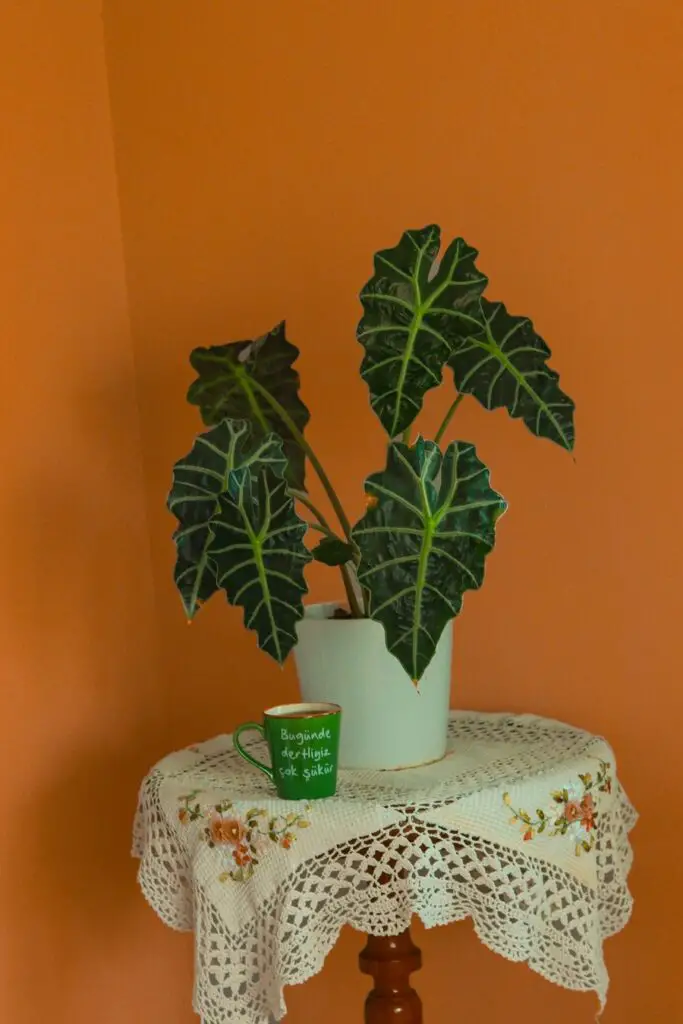
Alocasia amazonica (Alocasia Polly), is a tropical houseplant prized for its large arrow-shaped leaves and showy dark green patterns with white or silver veins.
Its leaves have a waxy or shiny texture that contributes to its striking appearance and also helps the plant resist moisture loss. They can also measure up to 30 or 40 centimeters in length.
Alocasia amazonica requires warm, humid conditions, as well as bright but indirect light. It is important to keep your substrate moist but not soggy and provide high ambient humidity for healthy growth.
9. Calathea
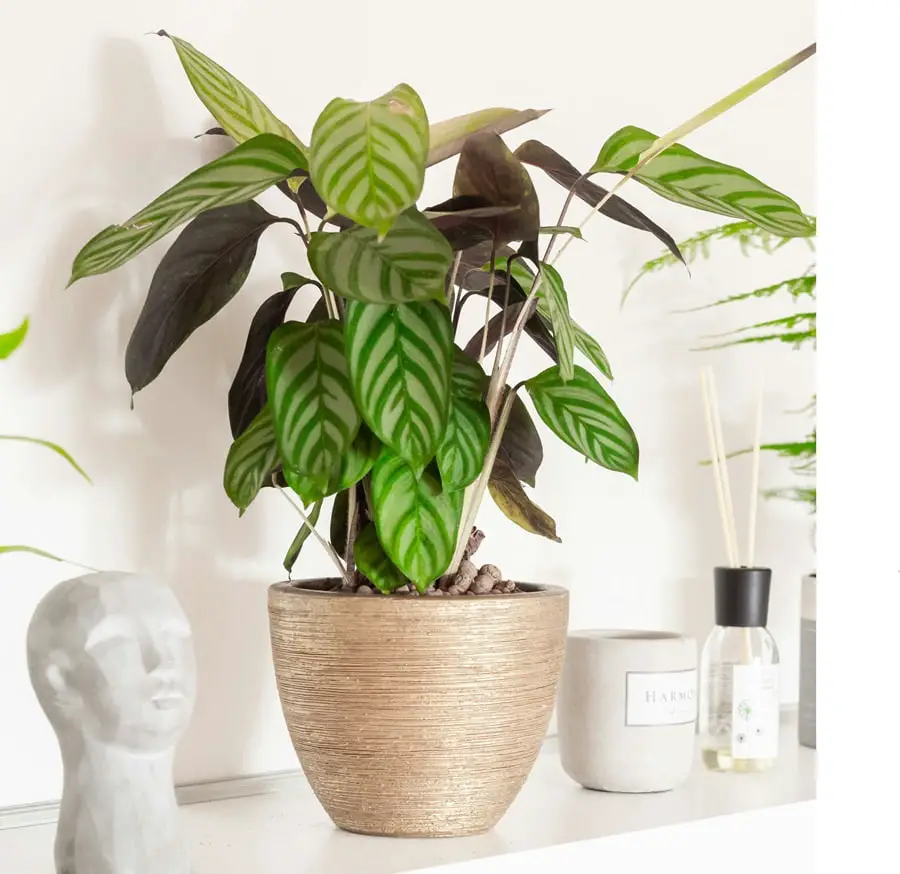
Calathea is a genus of plants with quite showy leaves and striking patterns. Native to South America, these plants require warm, humid conditions as well as indirect light, making them an excellent choice as a houseplant.
They are sensitive to excess water and need a well-drained substrate. In addition to their beauty, Calatheas have the unique ability to close and open their leaves during the day and night.
10. Sempervivum
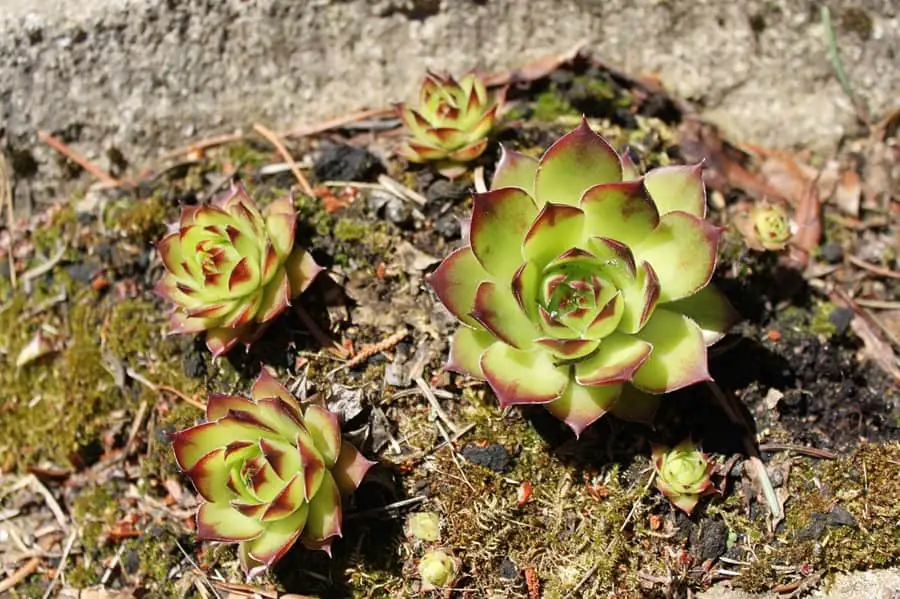
Sempervivum is a genus of perennial succulent plants, also known as “immortelle” they are small, compact plants that form rosettes of fleshy, pointed leaves.
They are characterized by their ability to resist drought conditions and poor soils. They are ideal for rock gardens, container gardens, and low-maintenance gardens due to their hardiness and ease of care.
Immortelles are hardy plants that thrive in full sun and well-drained soil, and are prized for their ability to add texture and color to outdoor spaces.
Although Sempervivum are known to grow best outdoors, some varieties can adapt to indoor conditions if given the right amount of light and care.
However, it is important to note that these plants prefer direct sunlight and a cool, dry environment, which can be difficult to replicate indoors.
Some Sempervivum varieties that might adapt indoors include: Sempervivum arachnoideum, Sempervivum tectorum, Sempervivum calcareum.
Bonus Plants
If none of the plants I showed you above are not to your taste (although I doubt it because they are beautiful), don’t worry, here I share a few plants that may be to your liking.
Kalanchoe is a genus of succulent plants that are characterized by their fleshy leaves and bright, vibrant flowers.
They are easy-care plants and adapt well to different light and soil conditions. Kalanchoe is known for its ability to bloom for long periods, adding color indoors and outdoors.
There are several species of Kalanchoe that can adapt to indoor conditions if provided with the right amount of light and care.
Some Kalanchoe varieties that can be kept indoors include: Kalanchoe blossfeldiana, Kalanchoe tomentosa, Kalanchoe luciae.
Anthurium is a tropical plant with bright, exotic spadix- and spathe-shaped flowers, which can be red, pink, white or other vibrant colors.
These flowers contrast with their glossy, dark green foliage, which is often in the form of oval or heart-shaped leaves.
This plant requires a location with indirect light and a well-drained substrate. Additionally, Anthurium enjoys moderately high humidity levels, so it is beneficial to regularly mist its leaves with water.
The Cyclamen is an ornamental plant with delicate and elegant flowers, which bloom in a variety of colors (pink, red, white and purple).
Its flowers are butterfly-shaped and grow on long, thin stems that rise above heart-shaped leaves. Cyclamen leaves can be dark green or silver and often have distinctive patterns.
Additionally, Cyclamen has the ability to flower during the winter months.
Conclusion
Having indoor plants not only adds beauty and color to your spaces, but can also provide certain benefits, since there are plants that have the ability to improve air quality by filtering toxins and increasing ambient humidity.
Additionally, they can create a feeling of calm and well-being, and some studies suggest that interacting with plants can reduce stress and improve mood.
Just remember that caring for houseplants involves providing them with the right amount of light, water, and nutrients, as well as maintaining a suitable environment.
Some houseplants are easier to care for than others, so it’s important to choose plants that best suit your lifestyle and your gardening experience.
